Axolotls are nice-looking exotic pets that can grow pretty well in size. If you are planning to put an axolotl or multiple axolotls then knowing the growth rate will help you track the fast or slow growth.
Generally, an axolotl will grow 9″ while the max & minimum can be 6″ & 18″. If they get the right upbringing like eating fresh food, regular feeding, large size tank, good genetics, and appropriate water quality then the growth rate would be fast.
So here I will answer some of your curious questions about an axolotl’s growth rate & how big do axolotls get in the aquarium.
How big is a fully-grown axolotl?
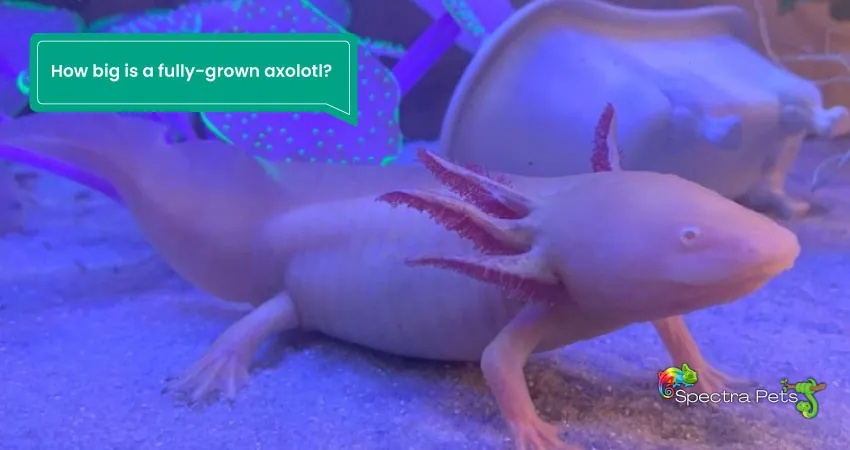
The size of full-grown can vary from one to another, but the average length of the axolotl is 9 inches.
However, they can be as small as 6 inches in length, referred to as mini axolotls, and as large as 18 inches, known as large axolotls.
How long does it take for an axolotl to be fully grown?
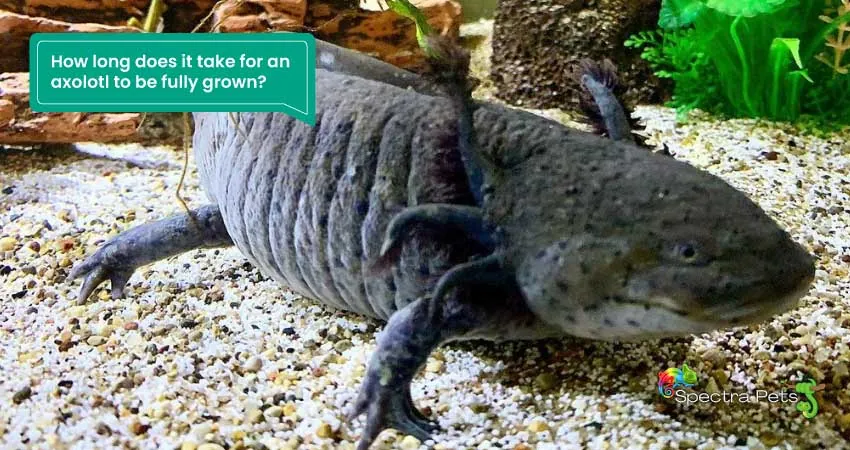
When it comes to the duration of full growth, approximately 18–24 months is the age at which an axolotl can reach its full size.
Multiple factors play a key role in their growth rate and permanent growth. Which includes the habitat, eating pattern, and size of the tank.
Adding to that, the female Axolotl will take a longer time to become fully grown, which can be a difference of a couple of months.
How fast do axolotls grow?
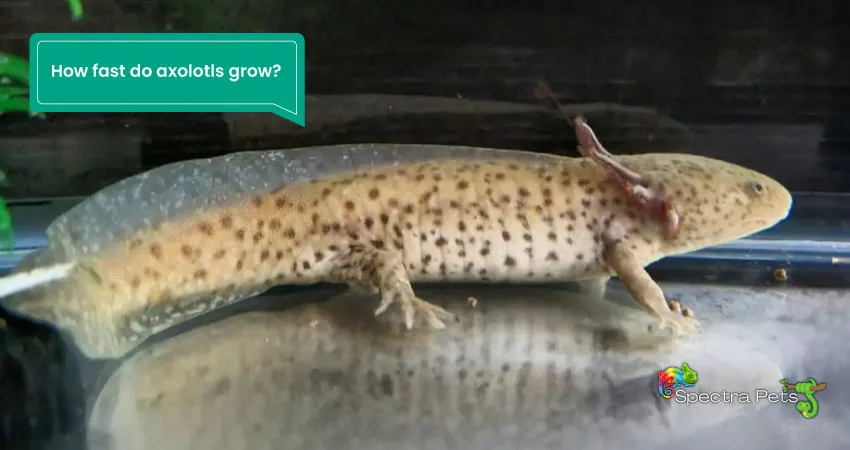
In terms of how fast the growth is, it can be as much as 7 centimeters per month if it’s fed well. An average axolotl will have a growth rate of 4 centimeters per month.
These growth rates continue up to their 6–8 months and then their per-month growth rate slows down a bit until they reach the full size.
Why are my axolotls small?
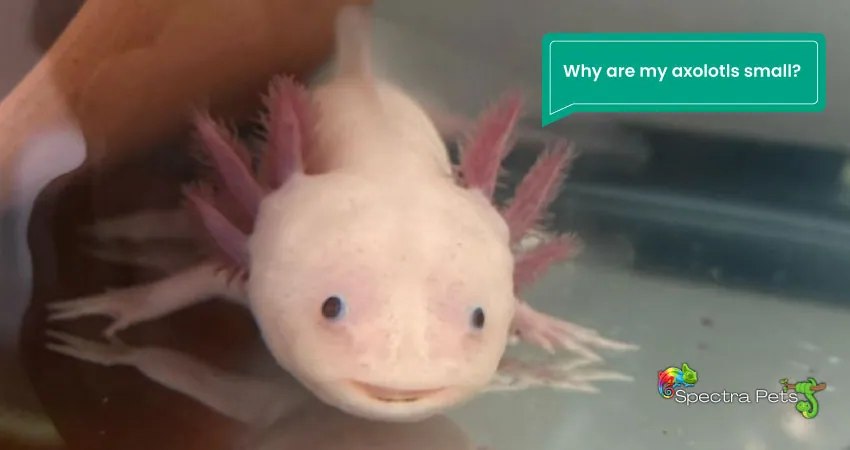
There’s a thing called genetics, and sadly you can’t do anything about it. Even if you continue feeding the small-size axolotl, most probably, there won’t be much impact on the growth.
When the parents of the axolotl are well-sized, it’s not common to see smaller offspring.
Sometimes they become small because they didn’t get an ample amount of food & nutrition which hampers their growth in their adulthood & juvenile period.
Also, 4 types of small axolotl are identified, and your lovely pet will fall under one of these categories based on their genetics.
1. Dwarfism
The first one is dwarfism where the axolotl’s head size is equal to the size of other adult axolotls, but their body size is too short. As a result, these pets look round. Moreover, they tend to have shorter limbs compared to normal axolotl.
2. Mini Axolotl
The second type is called mini axolotl. It can not grow more than 6 “but it has a normal body size. The dwarf axolotl does not grow at all. They are mostly the victim of the lack of outer factors that boost growth.
So if you have a small axolotl, you don’t need to worry because these dudes can survive a normal lifespan.
3. Slow Grower
Other types of Axolotl are simply slow growers. Though they look a bit smaller in their first quarter of life, later on they reach the average length of body size. It happens due to the lack of food in their primary life stage.
4. Short Toe Syndrome
The last category is kind of dwarf, but they have a deadly disease called short toe syndrome. This disease makes the animal’s body hold too much fluid. And they don’t grow much just like a dwarf Axolotl. But they don’t survive like a dwarf or mini axolotl and die around 2 years.
How do you make axolotls grow faster?
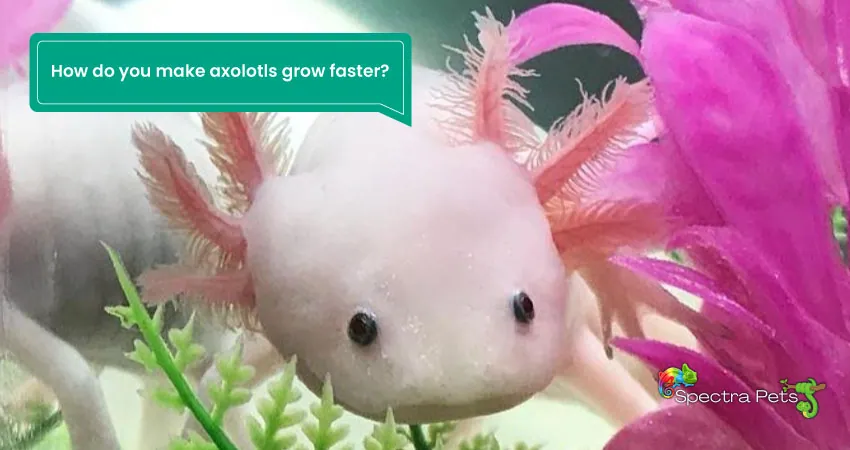
I know as an axolotl owner you want to ensure the maximum growth rate of your lovely pet.
There is no rocket science behind it, you can simply follow some things and enjoy seeing a good growth rate of your axolotl.
1. Provide ample amount of space
Unlike other aquatic animals, axolotls tend to grow their body size according to the size of their water tank. The average space required for an adult axolotl is 20 gallons, so you need to ensure you are giving this amount of space to a baby axolotl.
It will surely help the initial and further growth of your axolotl. Keeping them in a crowded tank will negatively impact their body growth.
Read More: Can Axolotls Have Tank Mates?
2. Good quality water
Along with their overall health, it’s crucial to maintain optimum water quality in every standard, which includes the right temperature, no ammonia, and proper filtration.
When all these parameters are on a perfect level, you’ll see the growth of your axolotl.
3. Fresh & right amount of food
Like any other animal, the axolotl growth is heavily altered by the proper food. When these beautiful critters get food they love, you will be happy to see their growth.
Try to include versatile nutritious food like fresh live food, as well as quality frozen foods. You can also add nutrients boosted pellets that will accelerate the growth rate.
When do axolotls stop growing?
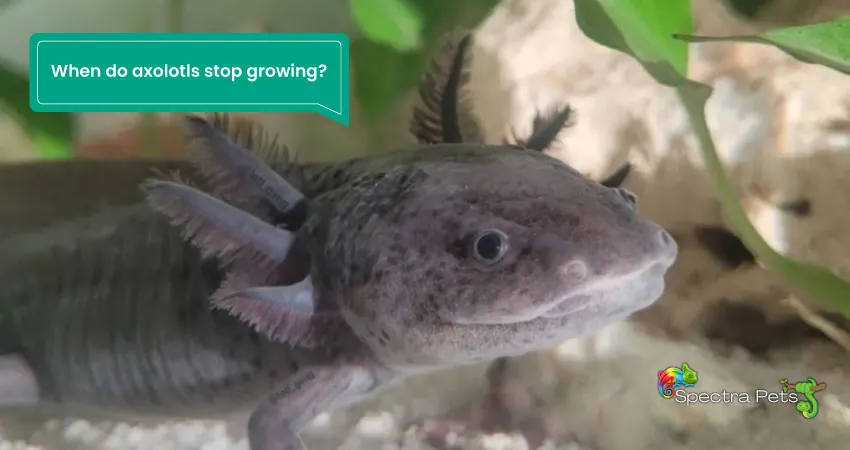
Every species has a certain age when the growth hormone is no longer produced by the body, and they stay the same size for the rest of their lives.
In the case of an Axolotl, this age range is around 2 years. After that, no matter what food they consume, it won’t have any impact. This is the red line where e growth of axolotl ends.
FAQs
How long does it take for the axolotl to grow an inch?
Typically, axolotl grows around 4–7 centimeters per month. Depending on some factors, it can fluctuate.
How long do axolotls usually grow?
Usually, axolotls’ growing range is 9 inches on average. The lowest can be 6″ & maximum can be 18″.
Do axolotls grow to the size of their tank?
Yes, Axolotls’ growth rate is directly related to their living tank size. If it’s smaller than their required level, there would be a hindrance in the overall growth.
How big are baby axolotls?
When saying baby, that means the stage right after coming out of eggs. Which is known as larvae and in this stage baby axolotls have around 0.5″ in length.
Final words
Just bringing an axolotl into your home and leaving them in the tank is the tip of the iceberg of petting an axolotl. There’s so much more about axolotl.
You saw earlier what the growth rate of the axolotl is and how they can be affected. Hope this article will let you track the growth rate efficiently.
If you find this little blog post a helpful one then it’s a double win for both of us.

